Pemba and Northern Mozambique Travel Guide
Note: Pemba and Northern Mozambiqure has been grappling with an insurgency led by Islamist militants since 2017, and Western governments advise against travel to many districts within the Cabo Delgado region. Pemba is a port town and the capital of the Cabo Delgado Province in the North of Mozambique. It has banks, patisseries, supermarkets, and restaurants, yet it retains a ramshackle feel with its potholed streets.
The town is built over rolling hills and most people live in wooden huts, set among the many impressive baobab trees. The history of the Cabo Delgado province and its people lies in many centuries of African, Arab, and Portuguese sailing, trading, and settling.
The Niassa Company founded Pemba in 1904 as Porto Amelia, named after a queen of Portugal. It was renamed Pemba at the end of Portuguese rule in 1975. Tarred roads connect it to the Nampula and Ilha de Mozambique, and international flights and tourist facilities are steadily on the increase.
Although Pemba is renowned for its Portuguese colonial architecture, it still has many of natural attractions. It's a prime location for water sports and diving. Nearby Ibo Island offers empty stretches of beach to explore some of the world's richest coral reefs while Quipaco Island is just 12 miles (20km) to the north.
Nacole Baobab Nature Estate and Nkwita Lake are also within an hour's drive. There's an authentic local market, called a in the centre of Pemba, selling arts and crafts, as well as traditional silverware.
It's quite large, extending some 1.2 miles (2km) along one of the town's main thoroughfares. Travellers should avoid the ivory on sale at the market, as its selling is contrary to Mozambican and international law. Maconde arts and crafts are popular Mozambican souvenirs available from Pemba.
Things to do in Pemba and Northern Mozambique
Although southern Mozambique is more easily accessible by road, the north is bursting with natural attractions and stunning beach resorts. It's increasingly attracting international visitors and developing tourist infrastructure to accommodate them.
Near the middle of the long, narrow country, the port city of Beira operates as a gateway to the north, particularly the Gorongosa National Park, the Cahora Bassa Lake, and the gorgeous Ilha de Mozambique, an island celebrated for both natural and cultural attractions.
Nestled in the far north, the port town of Pemba is another increasingly popular travel hub in Mozambique. From this shabby but picturesque town, tourists can access pristine white beaches, tropical islands, unspoilt wilderness, and national parks.
The Quirimbas Archipelago is Mozambique's new hotspot for beach holidays. A UNESCO site, the 31 islands in the chain are a haven for scuba divers and fishermen, with fascinating histories complementing the lovely beaches.
Inland from Pemba, the Niassa Game Reserve is a massive protected wilderness. Visitors should not that roads in the northern provinces of Mozambique are riddled with potholes and often require 4x4 vehicles. Travel is substantially harder in the rainy season of October to March, with mud making many routes impassable and resulting in reserves closing.
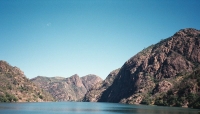
Cahora Bassa Lake
Situated in the Tete Province of Mozambique, Cahora Bassa is one of Africa's largest artificial lakes. One of three major dams on the Zambezi river system, along with Kariba and Itezhi-Tezhi, it powers the largest hydroelectric scheme in southern Africa. Songo is the nearest town, established in 1969 to house workers for the construction of the dam. There is a number of lodges and camps where tourists can stay, including Ugezi Tiger Lodge, which has an à la carte restaurant and a campsite with floodlights and security. Fishing is the dam's biggest drawcard and fishing trips are very popular, as the vast stretch of water contains a huge variety of fish, including tigerfish, sharptooth catfish, vundu, bream, longfin eels, and Zambezi parrotfish. Other attractions in the area include boat cruises and waterskiing. The lake and surrounding landscapes are very picturesque, replete with lush vegetation, dramatic mountain scenery, and a large population of hippos. Majestic baobab trees grow on the southern shores, while the area's rich birdlife will enthral bird enthusiasts. Sunset cruises and boat tours down the beautiful gorges of the dam are a must for travellers in the region.
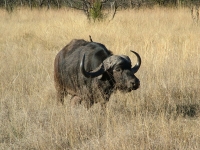
Gorongosa National Park
Often referred to as the 'place where Noah parked his ark', Gorongosa National Park was a popular tourist destination for the rich and famous back in the 1960s. During this time, the region's abundant wildlife attracted stars such as John Wayne, Joan Crawford, and Gregory Peck. The subsequent years of war and poaching decimated the wildlife count, with programmes implemented to restore the park to its previous star status as one of the richest wildlife refuges on the planet. Dominated by savanna and grassland, Gorongosa has a variety of terrain. Along with woodland and impressive limestone gorges, with lush rainforest covering the slopes. The park now includes the verdant Mount Gorongosa, source of the life-sustaining rivers that traverse the reserve. The mountain is sacred and features prominently in traditional folklore. Even after 17 years of civil war and extensive poaching, the Gorongosa National Park still supports astounding biodiversity and wondrous beauty. Experts have documented 398 bird species, 122 mammals, 34 reptiles, and 43 amphibians. Comfortable lodgings are available for visitors, and game-viewing highlights include elephants, buffalo, lions, crocodiles, and zebra.
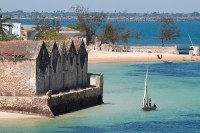
Ilha de Mozambique
Ilha de Mozambique is an island in the Nampula Province of northern Mozambique, up the coast from Beira. Home to a fascinating heritage, it was an ancient trading port and the capital for nearly four centuries while under Portuguese rule before the move to Lourenco Marques, now Maputo. Now a UNESCO World Heritage Site, the Island of Mozambique is an exquisite mix of Portuguese and Muslim architecture. These divide old Stone Town in the north and Reed Town in the south. There's a great museum found inside the Palacio Govierno, a big red building in Stone Town. Also worth seeing is the fort at the eastern tip of the island, home to the Chapel of Nossa Senhora de Baluarte. It is possibly the oldest surviving European building in the southern hemisphere, dating back to 1522. On a beach on the northern end of the island, there is a dive centre where visitors can take boat trips or just laze on the sand. The more adventurous should travel by dhow to Chaga or Mossuril on the mainland to explore the coast. Requilias and Escondidino are two popular restaurants in Stone Town, and there are a number of local places serving fish and rice, or chima. One of the best options for accommodation is the campsite on the mainland, next to the bridge.
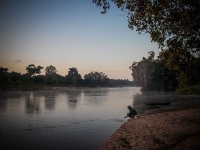
Niassa Game Reserve
Spanning an area of some 24,000 square kilometres (10 million acres), the Niassa Game Reserve is the largest protected area in Mozambique. It's one of the most pristine wilderness regions in the whole of Africa. Roughly the size of Denmark, the Niassa Reserve is twice the size of South Africa's famed Kruger National Park and boasts an abundance of wildlife, including varied birdlife, and absolutely stunning natural scenery. The park is special because it's essentially a wilderness area and is relatively unexplored. Visitors to the Niassa Game Reserve are spellbound by the changing landscape, ranging from mountain forests to miombo woodlands and savanna grasslands. This is not to mention the high concentration of wild animals, including something like 13,000 elephants, 200 endangered wild dogs, lions, leopards, and a huge assortment of birds. Giant rock formations, of which Mecula Mountain is the largest, are another exciting feature of the park. Tourists usually visit between April and October, the prime season for game viewing. The best place to stay in the Niassa Reserve is definitely the world-class Lugenda Wilderness Camp, which offers comfortable lodgings, game drives, hiking trails, rock climbing, and stargazing opportunities.
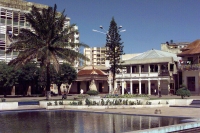
Beira
Situated in the central region of Sofala Province, Beira is the second largest city in Mozambique. It is home to the Port of Beira, acting as a gateway for the central interior portion of the country and the landlocked nations of Zimbabwe, Zambia, and Malawi. The Portuguese Mozambique Company originally established Beira in the late 19th century, with the Portuguese colonial government developing it further from 1947 until 1975. After gaining independence, Beira still sports aspects of colonial architecture but has deteriorated in some areas. Beira has a few interesting sights, including the Cathedral of Beira and the Fort of San Gaetano. Many of the shops, restaurants, and facilities in Beira cluster around the Praca do Município and Praca do Metical squares in the centre of town. There are some charming houses along the Ponta Gea and the port, including the Casa Infante de Sagres. Macuti Beach, with its iconic lighthouse, is easily the most fashionable part of Beira, though many parts are in need of repair. Savanna Beach is 16 miles (25km) out of town and you have to take a little boat across to the beach. The water is cleaner than in Beira and it's a great spot for fishing. About 8 miles (12km) out of Beira, between Macuti and the airport, Rio Maria is set between the sea and a lovely river. There are no facilities there but it is a very relaxing spot.
Mozambique travel info
Electricity
Electrical current is 220 volts, 50Hz. The rounded three-pin plug is common, particularly near the border with South Africa and in Maputo. Two pronged, round- and flat-pin plugs are also found.
Language
Portuguese is the official language, though over 40 languages are spoken in the country. English is taught in secondary schools, but is only spoken in the southern tourist regions.
Money
The official currency is the Mozambican Metical (MZN), which is divided into 100 centavos. In the southern parts of the country, South African rands and US dollars are often also accepted to pay for accommodation. It's prudent to carry some cash is these currencies for times when an ATM is out of order or nonexistent. Credit cards are accepted in most upmarket hotels in Maputo, but card facilities throughout the rest of the country are limited so, again, it's advisable to carry cash.
Tipping
Tipping has become standard practice in Mozambique, particularly in tourist areas where a tip of about 10 percent is expected in restaurants.
Health
Health regulations in Mozambique require visitors to have a yellow fever certificate if travelling from infected areas. Malaria is a risk throughout the year and prophylactics are recommended, as well as precautions against mosquitos.
Vaccinations are recommended for hepatitis A, hepatitis B, and typhoid. Visitors who will be spending a lot of time outdoors and may be at risk of animal bites should consider a rabies vaccination. All eligible travellers should be up to date with their COVID-19 vaccines.
Diseases caused by unsanitary conditions are common throughout the country, and untreated water should be considered as unsafe to drink. Cholera and other waterborne diseases are prevalent during the rainy season.
The government has declared tuberculosis (TB) a national emergency and expects it to be a problem for the foreseeable future. Hospital facilities are generally poor in Mozambique, and outside the major cities of Maputo and Beira medical facilities are limited.
Comprehensive medical insurance is essential and visitors should carry personal medical supplies with them. Visitors should make sure that all medication is in its original packaging and accompanied by a signed and dated letter from a doctor, detailing what the medication is and why it is needed.
Safety
Most visits to Mozambique are trouble free, but tourists should remain vigilant at all times. Violent crime can occur in major cities and tourist areas, and there is some mugging, bag snatching, and pick-pocketing. Visitors are advised to be alert in public places, to keep valuables out of sight, and to avoid walking anywhere at night. All visitors, especially women, should avoid walking alone on the beach, as beaches and offshore islands are not policed.
Visitors are advised that it is extremely risky to wander off well-travelled paths and roads, as a few unexploded landmines still lie scattered about the southern parts of the country. Local information should be sought before going off-road outside provincial capitals.
Travellers should remain vigilant when driving, as traffic accidents are common due to the poor condition of the roads. Many roads can become impassable in the rainy season (November to April), when there is also a risk of cyclones. Overland travel after dark is not recommended, and travellers should be especially alert when driving near the Mozambique-South African border. Police checkpoints are common, where foreigners may be at risk of harassment. There have been many reports of police attempting to solicit bribes, but travellers should insist on a written citation that can be paid at a police station. Travellers should also not travel to some northern districts in Cabo Delgado Province due to terrorism.
Local customs
Identity documents should be carried at all times; drug offences are taken very seriously, and can receive long jail terms and heavy fines. Visitors should ask permission before photographing anyone, particularly in remote parts of the country.
Doing business
Conducting business in Mozambique can be difficult, as many people only speak Portuguese or their own ethnic language. Translators are usually found in Maputo, but remain hard to come by. Punctuality is important and dress is usually conservative, with lightweight materials recommended.
Business associates should be addressed by their professional titles unless otherwise stated, and meetings generally start and end with a handshake. Men and women may shake hands, but any additional physical contact can be interpreted as romantic interest.
Duty free
Travellers to Mozambique may enter the country with the following items without incurring customs duty: 200 cigarettes or 250g of tobacco, perfume for personal use, and 750ml of spirits or three standard bottles of wine. Drugs are strictly prohibited and a permit is required for firearms and ammunition.
Communications
The international dialling code for Mozambique is +258. The outgoing code is 00 followed by the relevant country code (e.g. 0027 for South Africa). Internet access is easy and fast in Maputo and other major centres; upmarket hotels offer WiFi. Mobile coverage is expanding to all main cities in most provinces.
Passport & Visa
All foreign passengers to Mozambique must hold return or onward tickets, the necessary travel documentation for their next destination, and proof of sufficient funds to cover their expenses while in the country. Until recently visitors of most nationalities could obtain a 30-day tourist visa on arrival in Mozambique, but visas can now no longer be purchased at points of entry and must be organised beforehand. Those visiting Mozambique from a country where there is no Mozambican diplomatic mission should be able to get a visa on arrival but this should be confirmed in advance. A yellow fever vaccination certificate is required to enter Mozambique if visitors are arriving from or have transited through an infected area. It is highly recommended that travellers' passports have at least six months' validity remaining after the intended date of departure from their travel destination. Immigration officials often apply different rules to those stated by travel agents and official sources.
Entry requirements
US citizens must have a passport that is valid on arrival in Mozambique. A visa is not required for stays of up to 30 days.
British citizens must have a passport that is valid for at least six months beyond the date of arrival in Mozambique. A visa is not required for stays of up to 30 days.
Canadian citizens must have a passport that is valid for at least six months beyond the date of departure from Mozambique. A visa is not required for stays of up to 30 days.
Australian citizens must have a passport that is valid for at least six months beyond the date of departure from Mozambique. A visa is not required for stays of up to 30 days.
South African citizens must have a passport that is valid for at least 30 days beyond their intended stay in Mozambique. No visa is required.
Irish citizens must have a passport that is valid for at least six months beyond the date of arrival in Mozambique. A visa is not required for stays of up to 30 days.
New Zealand citizens must have a passport that is valid for at least six months beyond the date of arrival in Mozambique. A visa is not required for stays of up to 30 days.
Useful contacts
Department of Tourism official site: www.visitmozambique.net
Fire (198), medical emergencies (117), police (119).


